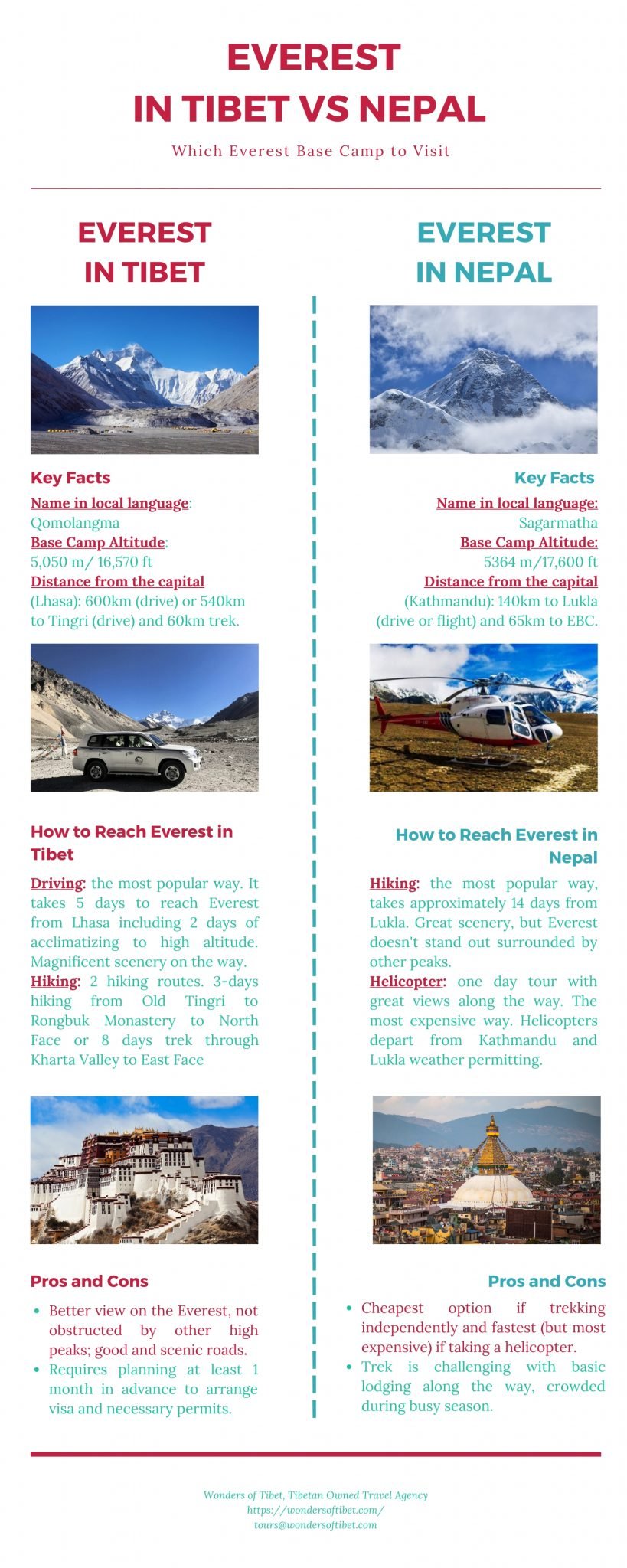Nestled amidst the soaring peaks of the Himalayas, Tibet and Nepal stand as two captivating destinations, each adorned with its own unique cultural heritage and natural wonders. While both regions share the breathtaking beauty of the Himalayan landscape, they also possess distinct characteristics that set them apart, making a comparative journey through their treasured jewels a captivating exploration of contrast and similarity.

Tibet, often referred to as the “Roof of the World,” is a land steeped in ancient Buddhist traditions and mystical legends. The majestic Potala Palace in Lhasa, once the residence of the Dalai Lama, stands as a testament to Tibet’s rich history and spiritual significance. Pilgrims and travelers alike are drawn to the sacred monasteries and temples that dot the Tibetan landscape, such as the Jokhang Temple, revered as the most sacred temple in Tibet.

Nepal, on the other hand, is a land of rugged beauty and diverse ethnicity. The mystical aura of Nepal is encapsulated in the vibrant Pashupatinath Temple, a sacred Hindu site located on the banks of the Bagmati River in Kathmandu. This temple complex is a testament to the deep-rooted spiritual beliefs of the Nepalese people, where devotees and sadhus gather to pay homage to Lord Shiva.

While both Tibet and Nepal are known for their breathtaking Himalayan vistas, each region offers its own distinct experiences. Tibet boasts the mighty Mount Everest, the highest peak in the world, which attracts mountaineers and trekkers from around the globe. For those seeking a more leisurely encounter, the serene turquoise waters of Lake Namtso, nestled amidst the Tibetan Plateau, offer a tranquil escape.
Nepal’s Himalayan landscape is equally captivating, offering a multitude of trekking routes for adventurers of all levels. The Annapurna Circuit, renowned for its stunning panoramas and diverse ecosystems, is a popular choice for those seeking a challenging yet rewarding trekking experience. For a more relaxed exploration, the verdant hills of Pokhara, with its serene lakes and vibrant culture, provide a perfect retreat.
Tibetan culture is deeply intertwined with Buddhism, and this spiritual influence is evident in the art, architecture, and daily life of its people. The intricate murals and colorful prayer flags that adorn the monasteries and temples of Tibet reflect the region’s profound devotion to its spiritual traditions. The Tibetan people are known for their warm hospitality and peaceful nature, creating a welcoming atmosphere for visitors.
Nepal’s cultural diversity is a tapestry of ethnic groups, each with its own unique traditions and customs. From the Newari people of the Kathmandu Valley, known for their intricate crafts and vibrant festivals, to the Sherpas of the Himalayas, renowned for their mountaineering expertise, Nepal’s cultural richness is a testament to its centuries-old history as a crossroads of trade and cultural exchange.
Whether it’s the spiritual allure of Tibet or the cultural tapestry of Nepal that captivates, both regions offer a unique journey through the heart of the Himalayas. While their differences provide a contrasting lens to appreciate their individual charm, their shared Himalayan heritage weaves a common thread that celebrates the beauty, diversity, and enduring spirit of this extraordinary mountain range.
